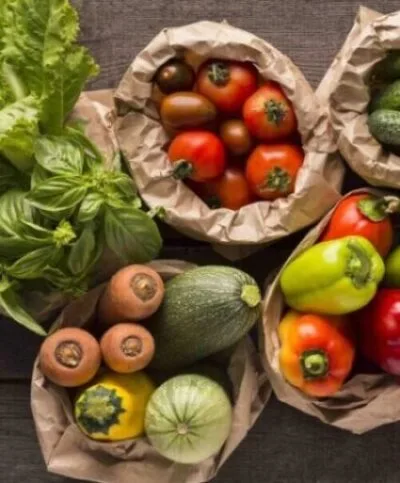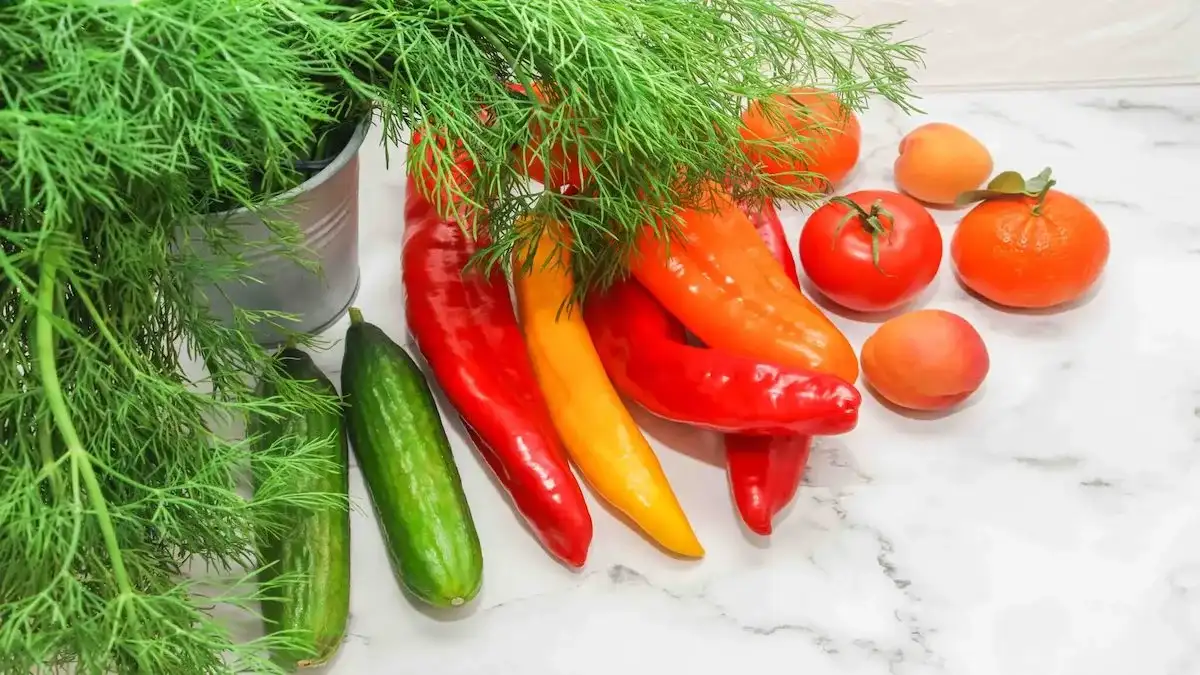Tropical Vegetables List
Tropical vegetables are not always well known to European gardeners. However, if you live in the tropics you need to grow food that thrives. As a result, tropical vegetables fit the bill. Some vegetables we have grown easily here are listed below.
List of tropical and subtropical vegetables
- Capsicum
- Cucumber
- Eggplant
- Jicama
- Kangkong
- Malabar Spinach
- Pak Choi
- Perpetual Spinach
- Pumpkin
- Snake Beans
- Sweet Potato
- Tatsoi
When to plant tropical vegetables
When to grow in the tropics depends on the vegetable. Many vegetables only grow well during the cooler dry season.
Consequently, your options are more limited during the hot, humid, wet season. However, there are some tropical vegetables like the sweet potato that grow well at any time of year.

Time needed: 3 minutes
How to know when to grow tropical vegetables.
- Save seeds.
If you collect seeds, you are always ready to plant. You just have to work out which seeds to plant and when.
- Plant the right seeds at the right time.
Below we nominate when to plant the tropical vegetables listed.
Chard (May to October)
Cucumber (March to November)
Kangkong (all year)
Pak Choi/Bok Choy (May to October)
Snake Beans (all year)
Sweet Potato (all year)
Tatsoi (May to October)
The months we have indicated are a good guide. However Climate change is really messing things up. As a result, traditional weather conditions can no longer be relied upon.
Tropical vegetables and fruits
In addition to tropical vegetables, many traditional European vegetables can also be grown easily. We love to grow pumpkin at home as well as celery, eggplant and zucchini.
Many European vegetables struggle in the tropics. We suggest growing during the following periods to give you the best chance of success:
capsicum (May to October)
celery (May to October)
pumpkin (April to November)
tomato. (May to October)
zucchini (April to November)
There are also many tropical fruits to grow that are worth considering for your garden.
To be more accurate, the good folk at Gardenate have created a planting guide to show you what to plant at any given month of the year.
Tropical Vegetables FAQs
Most gardeners think of four seasons; winter, spring, summer and autumn. However, in the tropics gardeners tend to operate on the basis of just two seasons, the wet season and the dry season.
The best time to plant is May/June. This time of year most vegetables and herbs will grow. Spinach, lettuce, broccoli, lettuce, pumpkin, radish, zucchini, capsicum, tomatoes, pumpkin, parsnips. etc
Vegetables you can grow in the wet season include snake beans, kangkong, taro, perpetual spinach, sweet corn, sweet potato, mustard greens and okra. Some other tropical vegetables are bamboo shoots, cowpea and winged beans.
Tropical Vegetable Garden
The high temperatures and humidity in the tropics can create problems with diseases and pests. So get on top of these and you are half way there!
A great tip is to grow in containers, raised beds or even mounds so water can drain away. Adding organic compost is also great advice, because it is sustainable and helps keeps plants healthy.
Remember, unhealthy plants will stress and when this happens, they emit chemicals that some pests can sense. Consequently this attracts those pests. Improved soil results in healthier plants, which are much less susceptible to insects or diseases.
Tropical insects can be rather plentiful, so stay on top of pest insects to avoid a plague in the garden.
White Oil
Regular application of ‘white oil’ can help address these pests. Indeed, white oil is an effective organic pesticide that you can make at home.
White oil concentrate is made by adding one cup dishwashing detergent to two cups sunflower oil. When ready to apply, dilute one tablespoon of the concentrate to one litre of water. Then pour into a spray bottle and apply.
However, do not apply when the temperature is over 30 degrees celsius (86F) or it may burn your plants.
